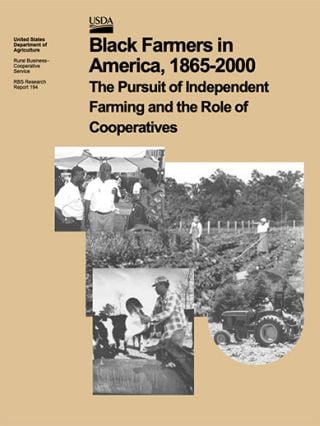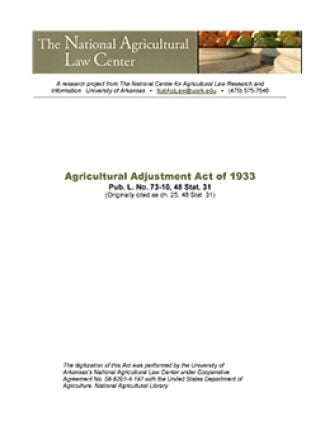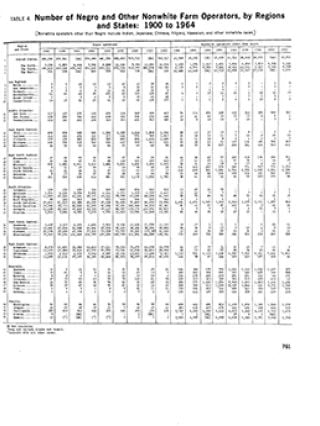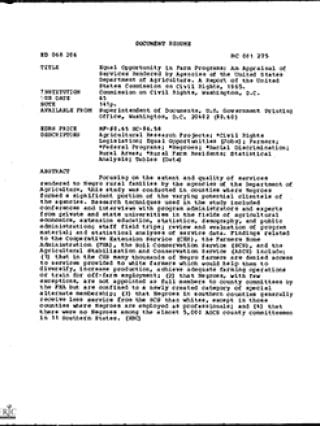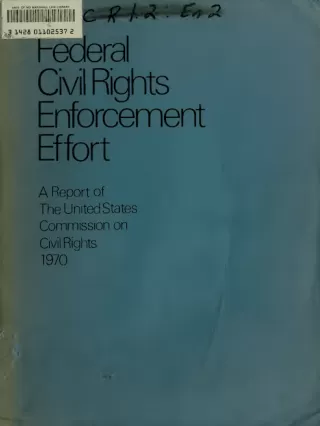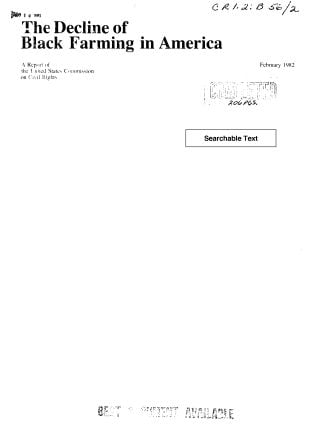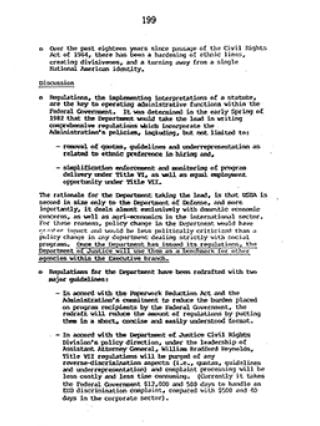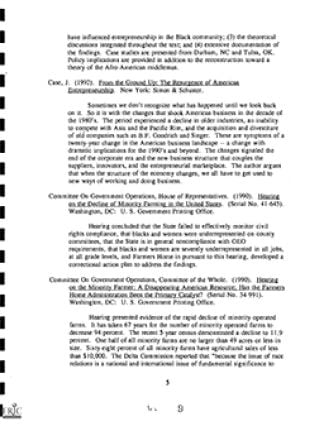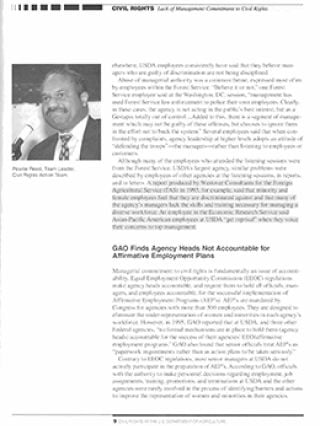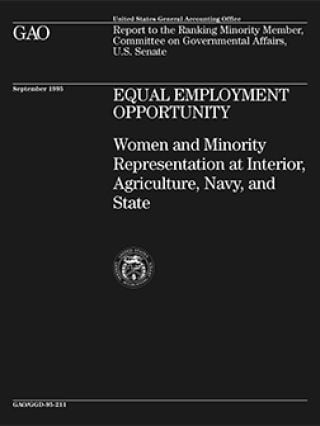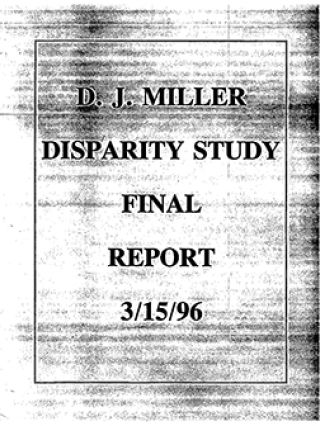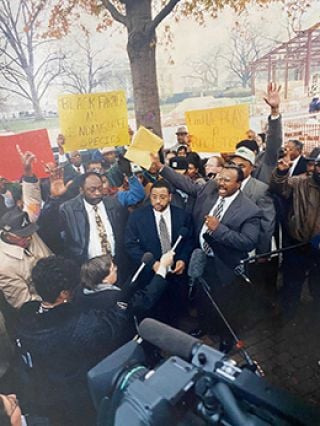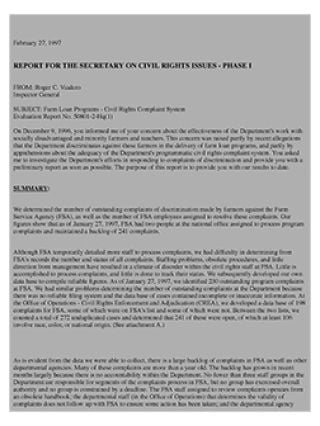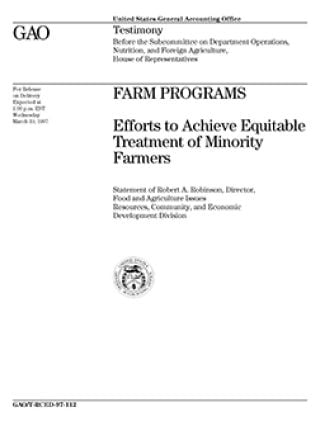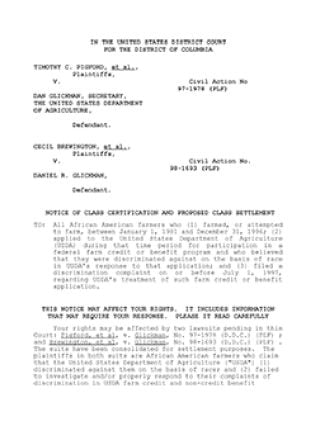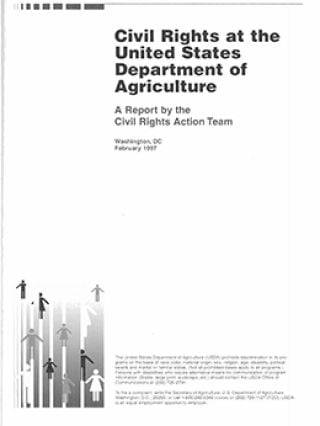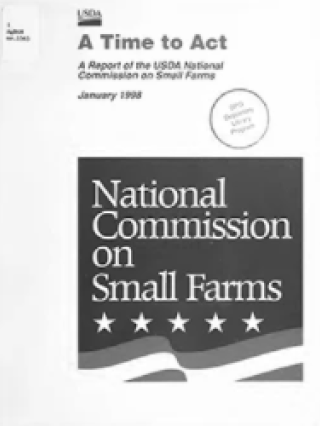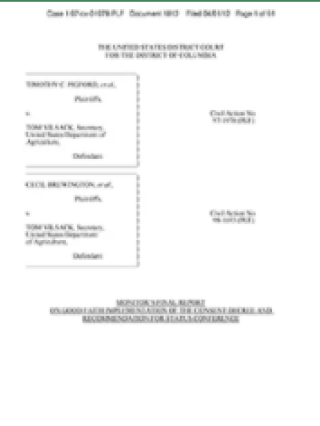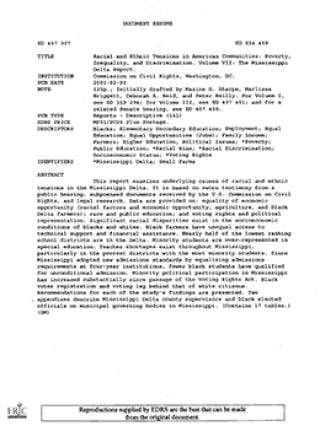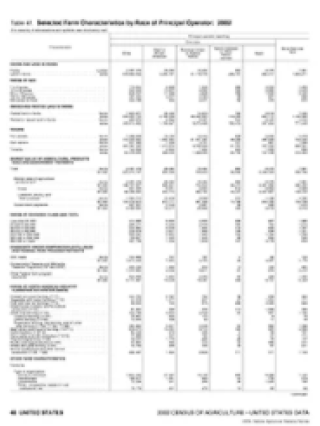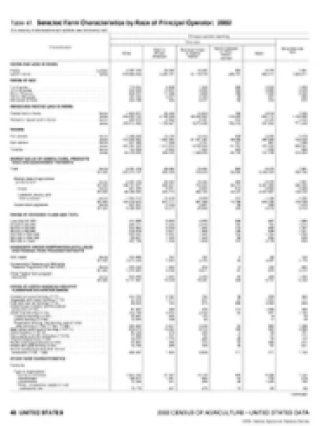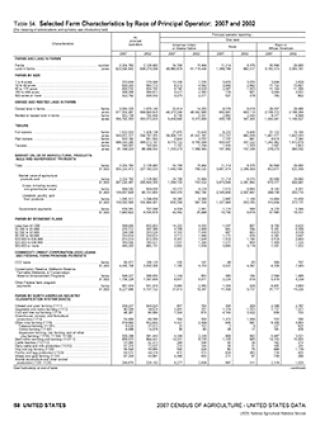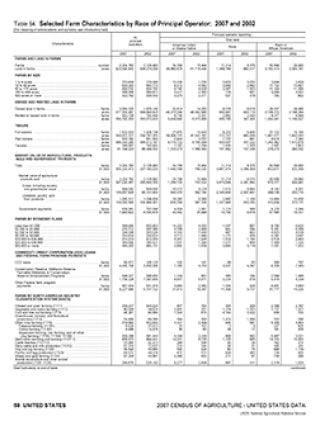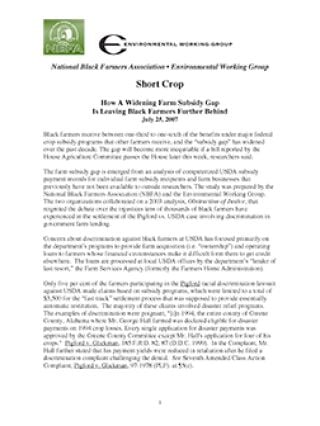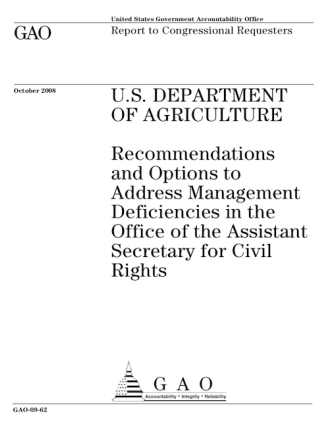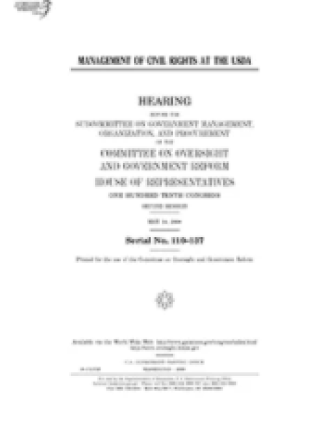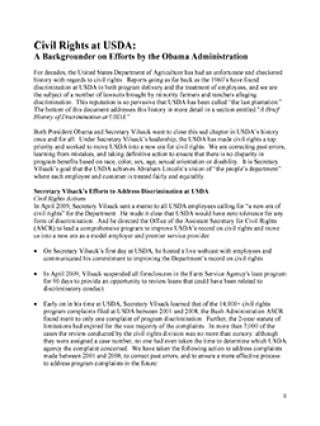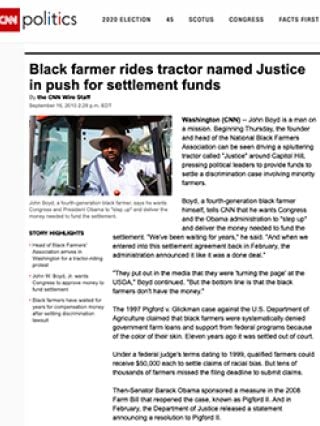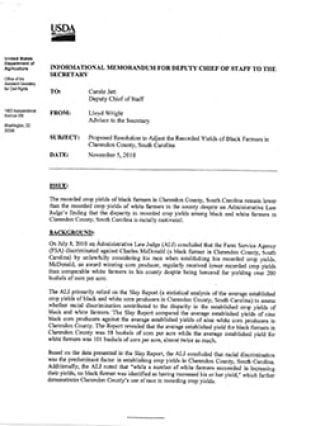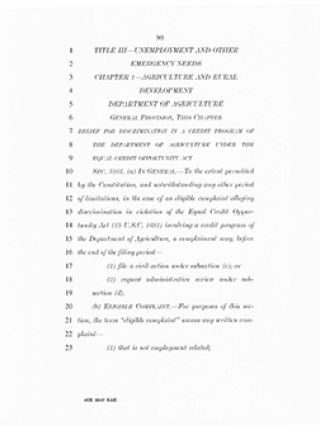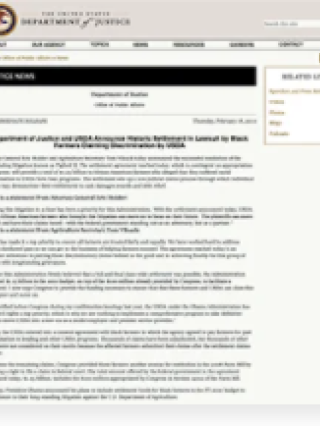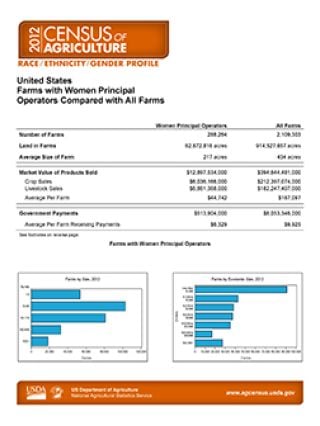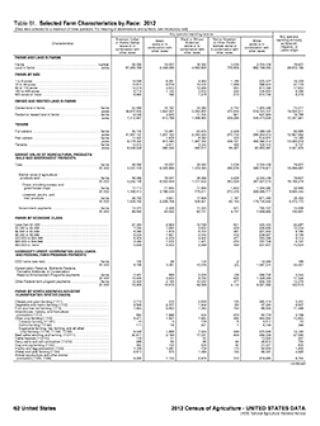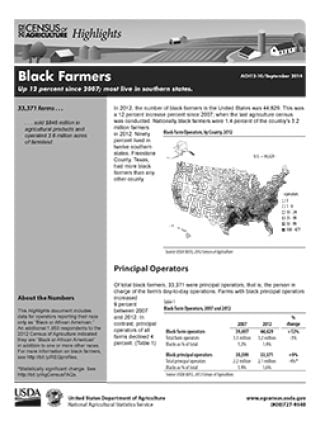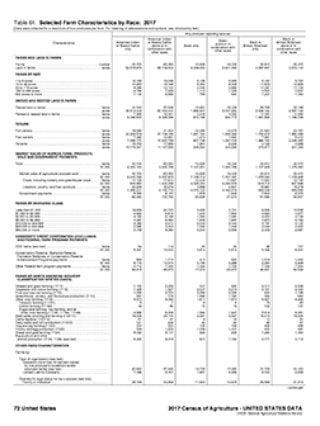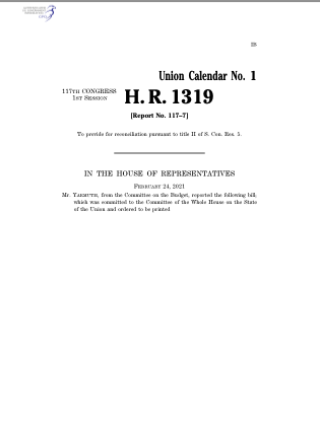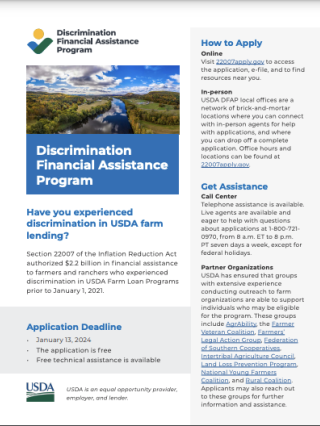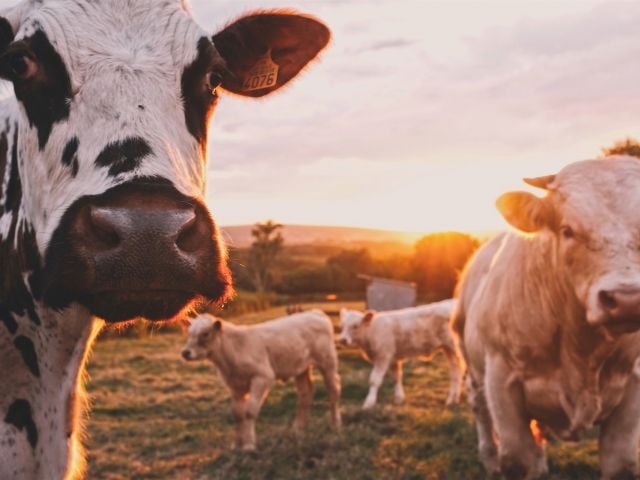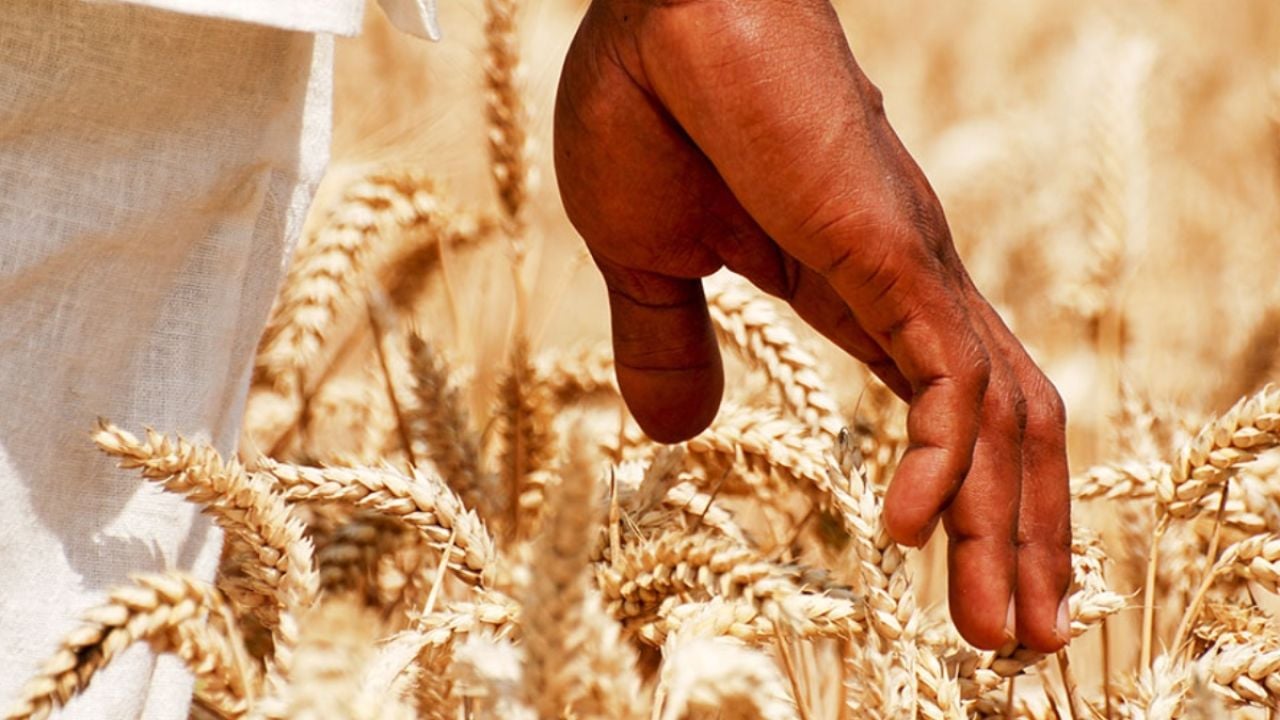
A collaboration between
1933
New Deal legislation to address low crop prices by reducing acres of farmland displaces many Black farmers.
1965
U.S. Commission on Civil Rights finds USDA discriminated against Black farmers when providing loans and conservation payments.
1968
Commission on Civil Rights finds Black farmers continue to face discrimination when seeking farm loans and assistance.
1970
The Commission on Civil Rights finds “Discrimination persists in the operation of some Agricultural programs,” noting that “there are also no civil rights staff in the [USDA] field offices.”
1981
USDA report notes that Black and minority farmers are “disproportionately represented in poverty groups” and that these types of farms have less access to needed credit.
1982
Commission on Civil Rights documents discrimination that led to the decline of Black farmers.
1990
House Committee on Government Operations report finds rampant discrimination in USDA loan programs.
1993
Report by Westover Consultants finds the USDA not held accountable for civil rights violations.
1994
U.S. Assistant Attorney General Walter Dellinger files a memo detailing the USDA’s authority to award monetary relief to Black farmers.
1995
The U.S. General Accounting Office, or GAO, report finds the USDA fails to address racial discrimination.
1995
GAO report finds widespread underrepresentation of minority farmers on county USDA committees.
1996
Consultant D.J. Miller releases a report finding Black farmers do not get fair share of subsidies, disaster payments or loans.
1996
The National Black Farmers Association holds demonstration outside the White House.
1997
The USDA’s Inspector General documents a “climate of disorder” among civil rights staff.
1997
The Congressional Black Caucus holds its first-ever forum on discrimination against Black farmers.
1997
The USDA publishes a Civil Rights Action Team Report detailing a long history of racial bias and discrimination by the agency.
1998
USDA report cites the role of the agency’s discrimination in the decline of Black farmers.
1999
John Boyd, the president of the National Black Farmers Association, or NBFA, brings his mule Struggle to Washington, D.C., to protest the USDA's treatment of Black farmers.
1999
Settlement in Pigford v. USDA reached to pay Black farmers $1.03 billion. More than 22,000 Black farmers seek claims, but only 15,645 receive modest payments. More than 61,000 Black farmers file late claims, but only 2,585 are accepted.
2000
The Senate Agriculture Committee holds hearing on discrimination against Black farmers.
2001
The Commission on Civil Rights finds Black farmers wait four times longer than white farmers for farm loans.
2001
More than 14,000 USDA discrimination complaints are filed between 2001 and 2008, but the department finds only one has merit.
2002
Black farmers receive $21.2 million in farm subsidies; white farmers receive $8.9 billion.
2004
EWG and the NBFA issue a report on USDA obstruction of Black farmer settlements.
2007
Black farmers receive $38 million in farm subsidies; white farmers receive $10.6 billion.
2007
EWG and the NBFA issue a report on the subsidy gap between Black and white farmers.
2008
GAO report details the USDA’s Office of Civil Rights’ failure to address civil rights claims properly.
2008
The House Committee on Oversight and Government Reform holds a hearing on discrimination by the USDA.
2008
Congress allows Black farmers originally denied payments from the Pigford settlement to reopen their claims.
2009
The USDA reopens discrimination cases and finds 3,800 of 14,000 have merit, but adds the statute of limitations has expired. Only 760 cases are addressed.
2010
Boyd drives a tractor around Washington, D.C., to meet with lawmakers to call for funding for USDA discrimination cases.
2010
A South Carolina court rules against the USDA in favor of Black farmers who faced discrimination.
2010
The USDA Office of Civil Rights seeks an extension of statutes of limitation for Black farmers' discrimination complaints, but fails to persuade Congress.
2010
Congress secures another $1.25 billion in payments for Black farmers previously denied payments.
2011
The Pigford case’s monitor report highlights the USDA’s failure to provide debt relief for Black farmers.
2012
Black farmers receive $64 million in farm subsidies; white farmers receive $8.1 billion.
2017
The USDA reports that the share of Black farm operators remains at 1.7 percent.
2017
Black farmers receive $59.4 million in farm subsidies; white farmers receive $9.7 billion.
2019
GAO report details the challenges faced by Black and minority farmers when seeking agricultural loans.
2019
During her presidential primary campaign, Sen. Elizabeth Warren (D-Mass.) releases a detailed plan to address past and ongoing discrimination faced by Black farmers.
2020
Sens. Cory Booker (D-N.J.), Warren and Kirsten Gillibrand (D-N.Y.) introduce the Justice for Black Farmers Act.
2021
Sen. Raphael Warnock introduces bill to provide debt relief to Black and minority farmers.
2021
GAO finds Black and minority farmers have less access to credit than white farmers.
2022
The Inflation Reduction Act, or IRA, provides more than $2 billion for farmers who experienced discrimination.



